
by Kush Bansal | Dec 14, 2021 | Opinion & Reviews
Ghostbusters are perhaps one of the most well-known franchises of comedy-horror. With the famous song by Ray Parker Jr, the movie’s incredible comedic cast, including Bill Murray and Dan Aykroyd, and its 80s pop-culture references like Twinkies, the Ghostbusters are loved by all. But perhaps the most strange part of this franchise is that out of the three movies made, the original 1984 flick is the only one best received by the critics and audiences alike. It has been many years since we have seen a proper squeal that all audiences, new and old, can enjoy. Thankfully, Ghostbusters: Afterlife helps break the curse.
The synopsis of Ghostbusters: Afterlife is as follows: when a single mom and her two kids arrive in a small town, they begin to discover their connection to the original ghostbusters and the secret legacy their grandfather left behind. The original movies were directed by Ivan Reitman, with his son Jason Reitman directing Ghostbusters: Afterlife. This was important to the film as it allowed for the legacy of the original films to carry on into this movie, which masterfully pays homage to the original and creates something memorable for new audiences to enjoy. For one, the acting is very enjoyable. McKenna Grace does a great job at being the primary protagonist going through the movie and discovering the legacy of the Ghostbusters and who her grandfather was. Finn Wolfhard does great as always, and so does newcomer Logan Kim, who surprisingly does a good job at handling both comedy and serious scenes. But perhaps the main stand-out of the movie is Paul Rudd, who brings his best in elevating every scene he is in, with one standing out in particular. Ghostbusters: Afterlife also does a satisfying job at referencing the original films. Unlike Ghostbusters 2016, which was a complete reboot and forgot about the original films, Ghostbusters: Afterlife is a direct sequel, and respects the legacy of what the Ghostbusters meant to fans and the people behind the movies alike. This movie is heartfelt and has some of the best ending battles I have seen this year. If I had any flaws, it would be that this movie would’ve probably done better in a bigger setting versus being in the middle of nowhere and that this movie would have been better to watch around Halloween, but overall I had a great time watching Ghostbusters: Afterlife.
I highly recommend you see this movie over the holidays, as it is still playing in theaters and is worth the watch. I am going to give Ghostbusters: Afterlife an A-. Thank you as always for reading my reviews, and of course, have a great rest of your day!

by Kush Bansal | Oct 27, 2021 | Opinion & Reviews
True story: in the 2014 hack of Sony Pictures, a hack sprouted from Seth Rogen’s 2014 comedy The Interview, it was revealed that Sony Pictures was planning to share the rights of the Spider-Man characters with Marvel Studios after the poor response to The Amazing Spider-Man 2. What a miracle, right? Well, note the word “share.” Of course, Tom Holland’s Spider-Man made quite the bang within the MCU, and stars in the third MCU Spider-Man movie this December (his sixth MCU movie overall), however, Sony wanted to get a piece of the cash-pie. So what did they exactly do? Make The Amazing Spider-Man 3? Make Spider-Man 4? Nope. They made Venom. Starring Tom Hardy, this 2018 movie focused on our favorite super-villain Eddie Brock fighting Spi-wait, fighting another bad guy?? That’s right, a Venom movie without Spider-Man, something so unnecessary, yet it grossed over 800 million dollars at the box office even with negative reviews. So, of course, they made a sequel. But surprisingly enough, this one is decent.
The plot of Venom: Let There Be Carnage is the following: Eddie Brock is still struggling to coexist with the shape-shifting extraterrestrial Venom. When deranged serial killer Cletus Kasady also becomes host to an alien symbiote, Brock and Venom must put aside their differences to stop his reign of terror. This movie is a significant upgrade over its predecessor. For one, its runtime is just over 1 hour and 30 minutes, making it a tight, quick, and a movie that cuts to the chase; something I liked compared to the bloat its predecessor had, which is surprising given that it was only 20 minutes longer. What the sequel gets right is doubling down on the relationship between Brock and Venom, something that was a highlight of the first one. This movie also picks up on the action, adding fewer but crazier set pieces and action scenes. The acting, while mostly over-the-top, works and isn’t as dry and stale as the first one. The special effects are great, and given that the movie’s budget is $110 million it was apparent that they used a lot of the budget for the character design of Venom and Carnage which looked straight from the comics. Overall, this movie is entertaining, however, its story is weak. The character of Carnage is significant in the Spider-Man comics. Carnage to Venom is what Joker is to Batman. While Woody Harrelson conveys the psychopathic personality of Cletus Kasady well, his character development throughout this movie felt underwhelming and wasted. This was apparent as this movie was rated PG-13 when in the comics Carnage has some of his iconic moments doing some R-rated things. The story felt very rushed in that I left the theater not caring much about what happened in the movie. Unlike its predecessor, I felt that the sequel could’ve spent some more time developing Carnage and Venom while not dragging the pacing. This movie felt too fast and was essentially the 1st and 3rd act of a movie, skipping the 2nd act that most movies have to develop their characters. That being said, I had a much better experience this time around compared to watching the first one.
Overall, this movie is an enjoyable time to indulge in some mindless action and enjoy the better performances this time around. In the end, I am going to give Venom: Let There Be Carnage a B-. Thank you for reading my reviews, and as always, I hope you have a fantastic rest of your day!

by Kush Bansal | May 5, 2021 | Opinion & Reviews
For the first time in this country, schools offered the option of attending school virtually or in-person. Coming after the COVID-19 Pandemic that left millions jobless and homeless, it also left students school-less. The 2019-2020 school year wrapped up in the messiest way possible, with teachers struggling to motivate students to complete their work, parents struggling to balance work and teaching their kids the concepts they needed to learn, and the students themselves who had to navigate the pressure of finishing school on a high note while learning on a 12 inch screen with terrible internet. It was hectic, and this year educators vowed to make the experience smoother and more efficient for both virtual and in-person students…however with this school year ending, it’s safe to say that many are still left disadvantaged from this system.
While this has been an issue that I have been taking notice of for a while, it wasn’t until my Government class that I started to get involved in resolving this issue. For our American Government class we have been working on our Civic Action Project, where as a group we decide on what needs to be fixed in our community and work towards a possible solution. Our group chose to research the impact that the COVID-19 Pandemic has had on schools in Franklin: We researched data about the concerns parents have, how teachers and students felt about their performance throughout virtual school, and what possible solutions were available. In fact, RAND Corporation surveyed 1,082 teachers and 1,147 school leaders from their American Educator Panels in October 2020.
The questions asked were about the teachers’ experiences during the 2020-21 school year so far:
- ⅔ of teachers said that the majority of their students were less prepared for grade-level work than they were at this time last year (around November 2019 before the pandemic).
- 56% of teachers said that they had covered only half, or less than half, of the curriculum compared to what they would have gotten to by this time last year (around November 2019 before the pandemic).
- Only about 1 in 5 teachers said that they were on the same schedule compared to the years prior.
We sent a survey to the elementary and middle schools as well as shared it within the high school. The data we found was that students at FHS are mixed in their opinions about their performance and opinions in virtual school, however, there still is a need for virtual help (results from April 24, 2021):
- 46.8% of the 188 respondents reported that they find themselves needing additional assistance or a tutor.
- 24% of the 188 respondents reported that they would like to be tutored by a high school student after school through a Google Meet.
Our overall goal is to establish an after school program where high school students who are interested in completing volunteering hours can come in after school to Mr. Nettesheim’s room (who has agreed to be the advisor for this activity). Those who need help will send their material to the tutors and will join a Google Meet so that everyone will be socially distanced. If you are interested, keep a lookout on this website for more information for when this club is officially created.
If you would like to be surveyed about this, please do through this link: Civics Project Survey – Virtual School. Thank you for reading this article to learn about this issue and how we are looking to fix it, and I hope you have a great rest of your day!
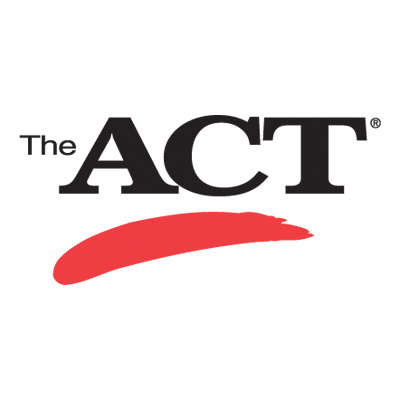
by Kush Bansal | Mar 1, 2021 | News
On March 9, the day will arrive in which all Juniors will have to take the standardized test, which may or may not even matter in a few years: the ACT. We’ve all heard the stories about how to “crack the ACT” or how to “beat the system”, but in reality it’s just a test which people cram for in the preceding weeks and then take. Yet, we see SO many students freak out about the pressures about getting the best score for college, which is understandable. That being said, this year the ACT will be done on our Chromebooks. Why? I have no clue. But it can be advantageous for many as an online test can be easier to cruise through, however, just because it’s online doesn’t mean it won’t be challenging. So if you’re here for guidance, you’ve come to the right place. This is the breakdown of the ACT and what you should do to prepare yourself.
What is the ACT? The ACT is a standardized test, similar to what the SAT is, in which students test themselves to see if they have met the proficiency goals required for the colleges they want to go to. Typically, colleges in Wisconsin want scores anywhere from 20-30, however, more competitive schools like Ivy Leagues and schools like MIT need an ACT score of at least 34.
What does the ACT look like? There is the English test which takes 45 Minutes and has 75 Questions. Then there’s the Math test which takes 60 Minutes and has 60 Questions. Then, students get a 15 minutes break. After their break, there is the Reading test which 35 Minutes and has 40 Questions. At last, there is the Science test which takes 35 Minutes and has 40 Questions. Then, the final test is the Writing test which is 40 minutes and DOES NOT factor into you composite score. The English, Math, Reading, and Science tests are ALL multiple choice while the Writing test is a short perspective essay that you have to write.
How is the ACT test scored? The English, Math, Reading, and Science tests are all scored on a scale of 1-36. Then, your composite score is all four scores added up and divided by 4. So, if you get a 31 in English, a 30 in Math, a 26 in Reading, and a 28 on Science, your composite score would be 28.75, which would be rounded up to a 29. You also have an Writing test which is scored on a scale of 1-6 by TWO graders. the scores from both graders are then added up and you get your writing score. So if both graders give a score of 4 for your Writing test, then you get an 8 on the Writing test. The score from the Writing test is not counted in your composite score.
How should you prepare for the ACT? Study everyday. Take at least one practice test a day to help you practice the skills needed to do well on the ACT. Pay attention in class when your teacher goes over the ACT material, as it can be very helpful for your prep. Ask questions, reach out to other people for tips, and stay committed. Lastly, don’t panic. Relax and don’t let the stress of the ACT overcome you. It’s just a test. While it is important, it is also important that you don’t uproot your whole life for the ACT. You can always retake the ACT. Put forth your best effort on test day and you will be fine.
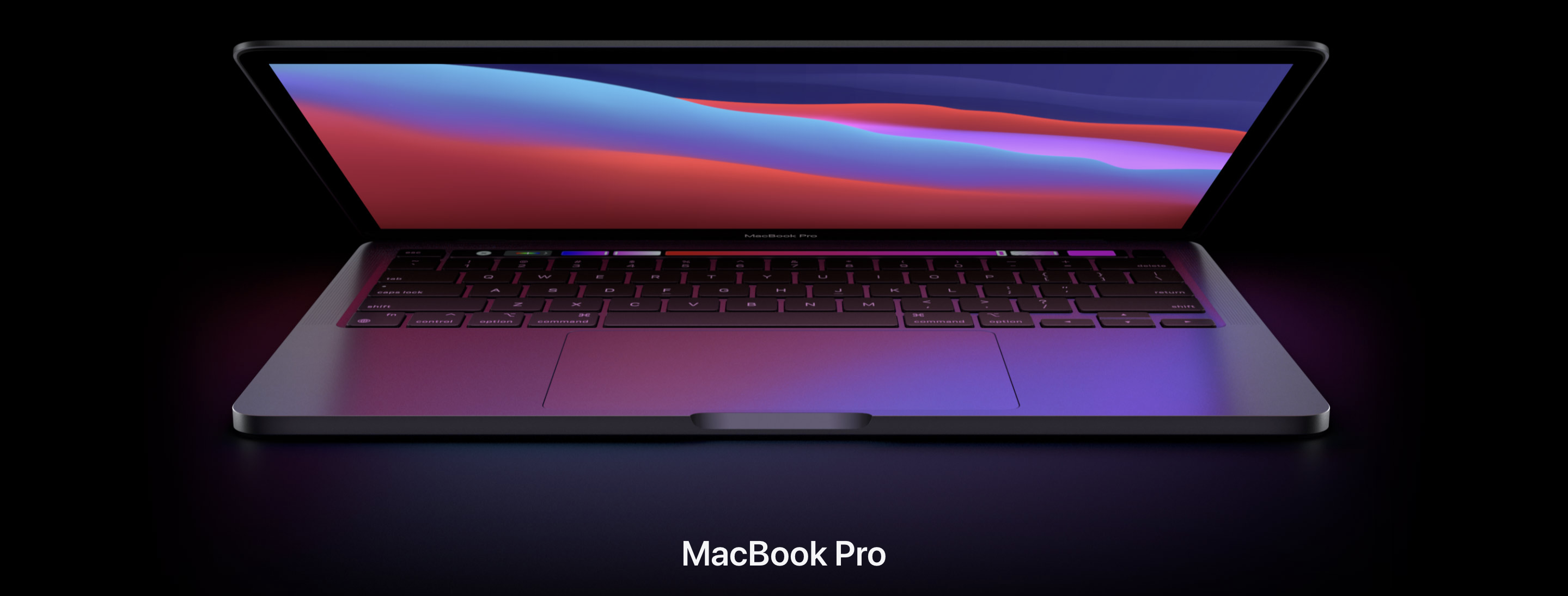
by Kush Bansal | Jan 27, 2021 | Opinion & Reviews
New year, new tech. It’s almost one year after the pandemic when most of the world had to shift to their computer as their portal to work, learn, and socialize. As a result, the latest and greatest technology became all the more important . Of course, Apple is one of the front-runners in terms of brand popularity and technology quality. In November of 2020 Apple released their new models of MacBooks AKA their laptop line that has been evolving for the past 30 years. While on the outside they look similar, Apple has introduced brand-new technology that is a game-changer for computer processing. Now look, the computer I am reviewing is not for everyone as everyone has a different budget BUT this should give you a good idea on whether or not a computer upgrade is worth it. Additionally, some features are only available to the MacBook Pro, which I will point out throughout the review. That being said, these are my thoughts on the brand new MacBook Pro: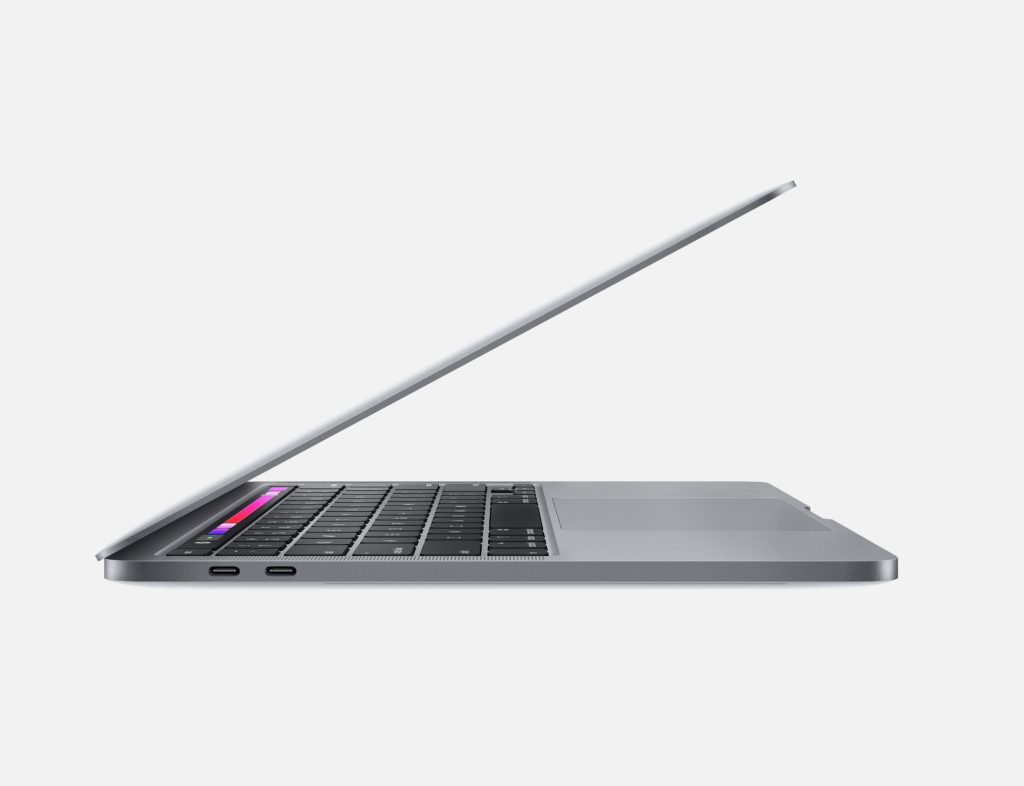
The M1 Chip:
The main upgrade introduced in this version over the others is the brand-new CPU. In an effort to regain control of the CPU market, Apple created their own chipset to better adapt to their software system while also provide faster computing power and stabilization than from chips by Intel. In layman’s terms, this computer is fast. It takes the computer 15 seconds to start up and instantly wakes whenever you want to use it again. While gaming can be a hit-or-miss depending on the intensity, it can definitely handle multitasking, video editing, and video streaming. The only downside as of 1/9/2021 is that not every app you can get on the Intel Macs supports the new chip yet, however, that is expected to change in the coming year. Still, the best reason to upgrade is because of the M1 Chip.
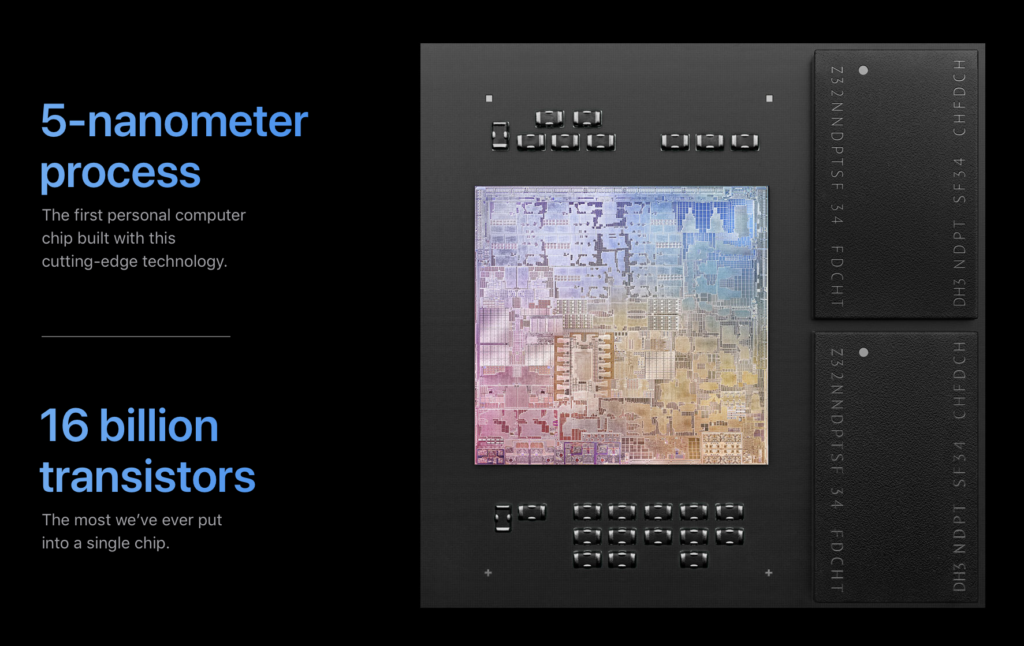
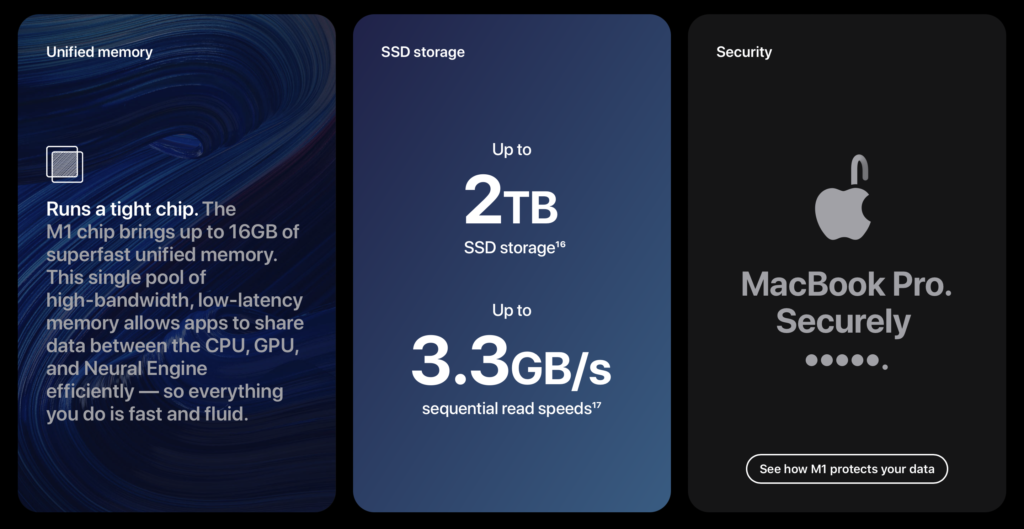 The Hardware:
The Hardware:
While borrowing the same features from its previous iteration, the hardware of the M1 MacBook is nothing to cast aside. The screen, while not bezel-less, is still full of detail with high levels of brightness and color brightness.
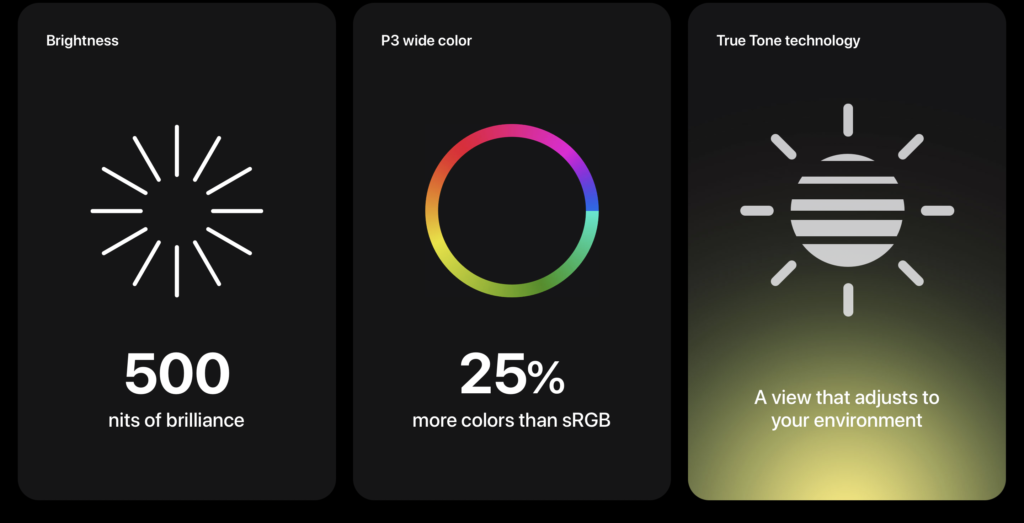
The only unfortunate thing is that it is only available in a 13″ variant as opposed to the 16″ model that Apple offers with the Intel chips, although this will hopefully change in 2021. Although there is no touchscreen, there is a Touch Bar, which is a touch screen that replaces the function keys on the keyboard and adapts to each app, offering functions and shortcuts that change with each app (only on the MacBook Pro). The keyboard has also improved significantly with the move to scissor-switches instead of butterfly-keys, since butterfly-keys kept on getting stuck if there was any debris in the key, therefore Apple scrapped the design and redesigned the keyboard from scratch. The mousepad is also fast and responsive although I would recommend used a separate mouse for more precise control. The last thing about the hardware that I found to be great was fingerprint reader, which replaces the power button and, like the name implies, can log into your computer with the touch of your finger. This also offers an easy way to access your online accounts as well as make purchases on iTunes or the App Store by simply suing your fingerprint, something that is very efficient compared to a password. The hardware is solid all around and hopefully it will improve in the future with a better screen.
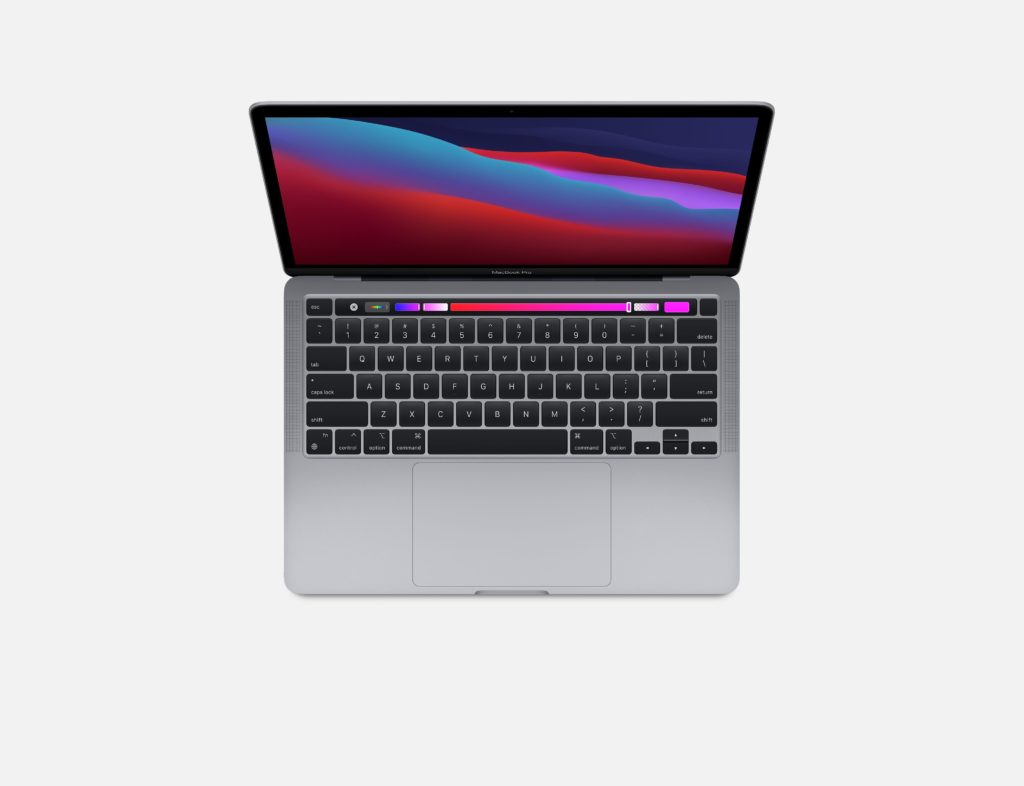
The Software:
With the release of Apple’s new operating system (called Big Sur), Apple has added in new features that not only benefit this computer but other recent MacBooks as well. The main features that set the M1 MacBooks and Intel MacBooks are the ability to download and use iPhone and iPad apps directly on the MacBook, allowing for a wider arrangement of apps to be accessed by the user. Additionally, every app, Intel or not, can be used on the M1 MacBook thanks to Rosetta 2, which essentially emulates older apps directly on the MacBook. That being said, it all depends on whether the App Developer would want to port the app to the new computers, however, this is subject to change very soon. Big Sur offers faster performance and battery health as well as makes the UI easier to use. Apple’s OS, in my opinion, is much better than Windows OS.
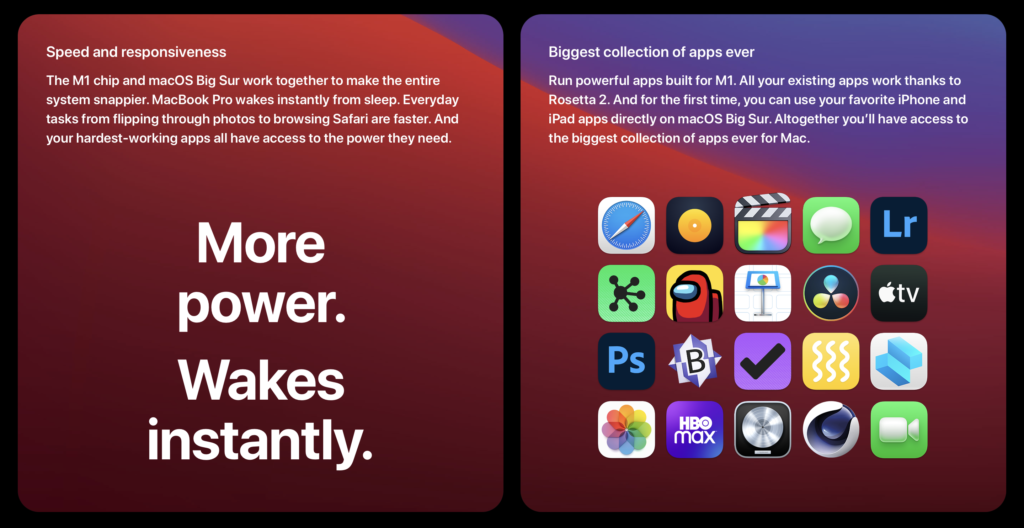
Final Thoughts:
Overall, the M1 MacBooks are fantastic and a sufficient upgrade to its predecessors. The M1 MacBook Pro starts at $1299.99, however, if that price is too expensive the M1 MacBook Air starts at $999.99 and offers almost all of the same features as the MacBook Pro. If you are looking for a brand new computer, I cannot recommend the M1 MacBooks enough. Thank you for reading my thoughts on the new MacBooks, and be on the lookout for more reviews soon!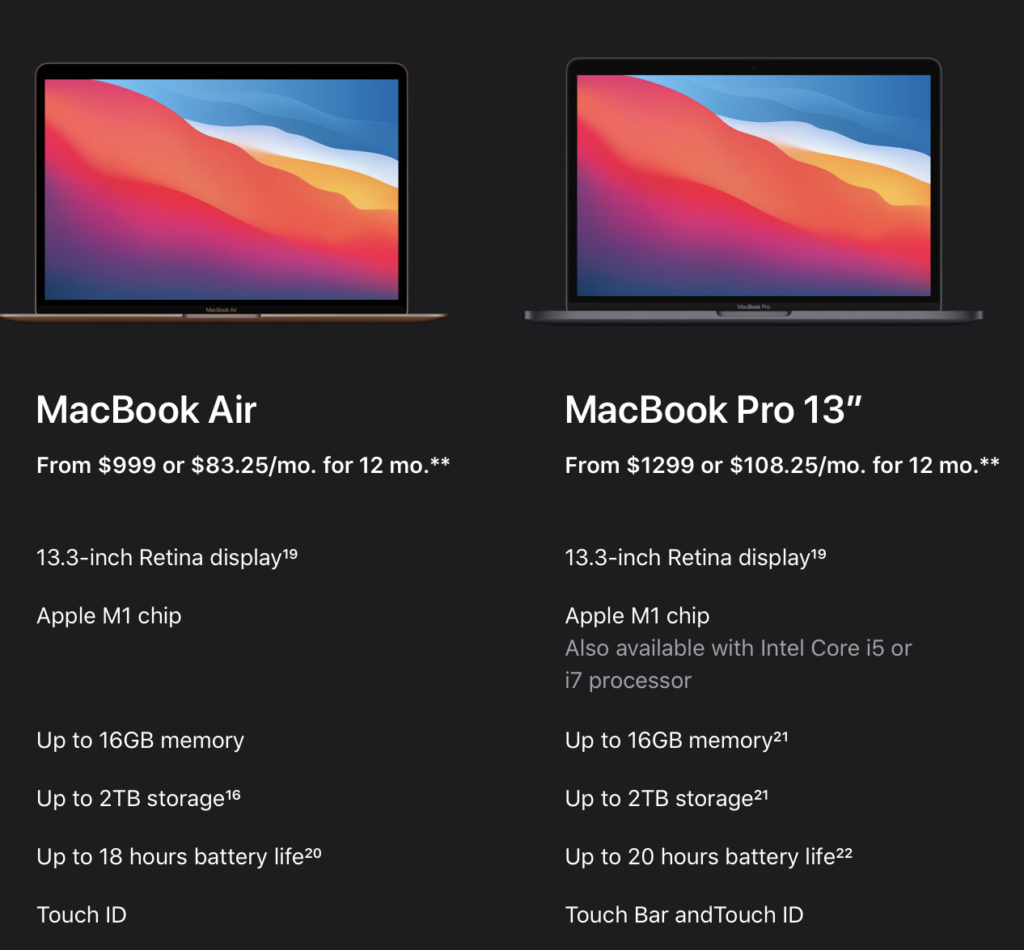

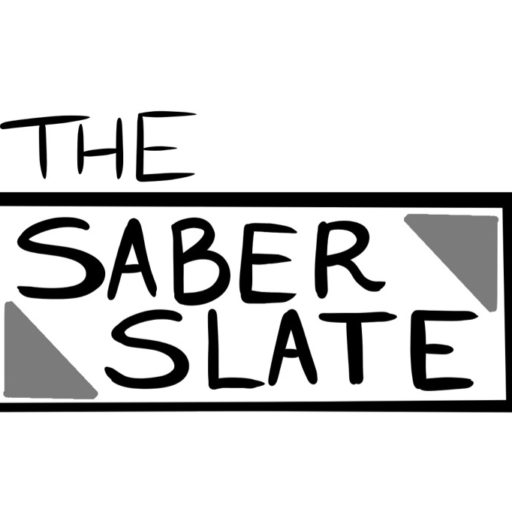






 The Hardware:
The Hardware:


